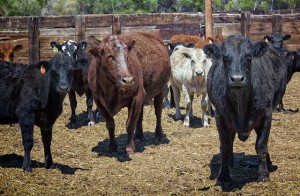Antibiotics and antibiotic-resistant bacteria air-borne from feedlots
The rise of antibiotic-resistant bacteria is commonly attributed to the overuse of antibiotics in livestock. Antibiotics are fed to livestock at low levels on a regular basis to enhance growth. They then enter the environment via animal urine, which eventually makes its way through soils and into waterways. Once antibiotics are present in the environment, they can lead to even more antibiotic resistance in bacteria. A new study has now demonstrated that antibiotics are dispersed into the environment via air, as are antibiotic-resistant bacteria from feed-lots, increasing chances of human exposure through inhalation. Particulate matter was collected from feedlots, with air samples collected upwind and downwind. Samples were tested for the presence of antibiotics and for antibiotic-resistant bacteria. Results showed that all samples collected downwind of feedlots contained significantly more antibiotics and antibiotic-resistant bacteria, including some that are known to infect humans. “There is significant potential for widespread distribution of antibiotics, bacteria, and genetic material that encodes antibiotic resistance via airborne particulate matter as a result of the large particles released daily from bed cattle feed yards in the Central Plains of the United States,” the authors concluded.




